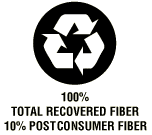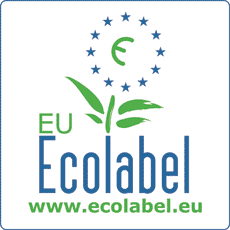Is your notebook made of sustainable paper?
- Nanthinee Jevanandam
- Sep 21, 2018
- 5 min read
Updated: Oct 6, 2018

Paper is a much-used commodity in everyday life ranging from the ubiquitous receipts to documents and packaging material. Despite the prevalence of it, many aspects of paper are still not understood (or are misunderstood). For example, what is the difference between recycled paper and post-consumer recycled paper? What does Forest Stewardship Council (FSC) certified paper actually mean?
This guide was developed in order to explain some common definitions, and to guide consumers in making informed choices about their paper purchases.
PAPER 101
Wood harvested from trees is turned into wood pulp through a mechanical or chemical process.
Mechanical process – Wood chips are ground and pressed into fibres which are eventually turned into paper.
Chemical processes – Chemical solutions are used to dissolve wood into pulp, and to separate lignin from cellulose fibres, which is the primary component of paper. This is where the term, Tree-Free Paper, comes from. It refers to the absence of lignin (the wood component), and not the absence of trees as the raw material, as is often thought. Bleach such as chlorine may be added at this stage to remove any natural colouring. Other chemicals and additives such as chalk may also be added to provide texture and opacity.
The processed wood pulp is then fed through a machine and rolled out into sheets of paper, also known as virgin paper because its produced directly from trees, with no recycled paper added. These are then dried and may be further coated to provide different types of finishes such as glossy or matte. The paper is then cut to size, packaged and shipped to retailers.
For the benefit of consumers and business striving to be environmentally responsible, a number of certifications have been introduced through the years. We will cover the more common and reputable certifications and definitions.
Forest Stewardship Certified (FSC) paper
The Forest Stewardship Council is an international not-for-profit organisation that operates by setting verifiable standards for sustainable forests. These standards address biodiversity, indigenous people, local and national laws amongst others. Buying paper that is FSC certified means that the paper is sourced from sustainable forests that comply with FSC standards. In order to ensure that the companies that supply FSC certified paper abide by FSC standards, independent auditors monitor them periodically.
FSC’s credibility is built on 1. Transparency of criteria, 2. Third-party audits, and 3. Criteria developed in an inclusive manner.
Remember – A credible green label is always TRANSPARENT – their standards are made available online to consumers, INCLUSIVE – industry specialists, academics and stakeholders are involved in setting standards, & Third-Party certified.

Recycled Paper
Paper that is reconstituted into paper again is defined as Recycled Paper. It may originate from a variety of sources, and is not necessarily sustainable. There are 3 categories of Recycled Paper.
Recycled Paper – Paper that is reconstituted into paper again is defined as recycled. It may originate from any source and is not necessarily sustainable. For example, faulty virgin paper or leftover virgin paper from paper manufacturing mills may be reconstituted back into paper, and correctly labeled Recycled Paper. However, the original paper may not have originated from FSC certified sources in the first place. Unless it has been labeled FSC certified recycled paper, the source is questionable.
Three labels indicating recycled paper. However, the first two provide clear information, while the last does not.
Pre-Consumer Recycled Paper – This type of paper is made of paper that has not been used by consumers. For example, magazines or books that have been printed in excess and then sent for recycling. As with Recycled Paper, unless certified by a third party or the origins clearly stated, the source of the paper may not be of sustainable origins.
Post-Consumer Recycled Paper – This type of paper is made from paper that has gone through consumer use and then sent for recycling. E.g. newspapers, office waste paper, food packaging etc. Paper labeled as Post-Consumer Recycled Paper will state the percentage of post-consumer paper incorporated such as 30%, 50%, 70% or 100% Post-Consumer Waste (there are variations in percentage content).
Labels indicating Post-Consumer Recycled Paper.
Chlorine
In order to achieve white paper, fibre has to be bleached and chlorine is often the frequent choice of chemical. When standard chlorine is used to bleach massive quantities of white paper – from copier paper to baby wipes and coffee filters – dioxins and chlorinated toxic pollutants are released into waterways and is a leading cause of environmental degradation and human health issues (read WWF Guide to Buying Paper). In order to reduce environmental impacts from chlorine, consumers are increasingly demanding that standard chlorine be removed from the paper making process. This has led to Total Chlorine Free (TCF), Processed Chlorine Free (PCF) and Elemental Chlorine Free (ECF) processes being introduced. However, while environmentally responsible chlorine processes have been adopted in developed countries, paper manufactured in developing countries face less strict regulations and may still use standard chlorine.

Total Chlorine Free
Total Chlorine Free (TCF) paper is produced without any use of chlorine or chlorine derivatives. Usually oxygen-based alternatives are used in place.

Processed Chlorine Free
Processed Chlorine Free (PCF) paper is produced without chlorine or chlorine derivatives. However, the paper used may have originated from mixed sources of virgin paper, recycled paper and post-consumer recycled paper that may have originally been bleached with chlorine or chlorine derivatives.

Elemental Chlorine Free
Elemental Chlorine Free (ECF) paper is produced with chlorine dioxide in place of standard chlorine. This is the more frequently found label.
CHOOSE WISELY – Producing approximately 360 reams of copier paper requires 24 trees, 25 000 litres of water, 10 061 kWh electricity, and 2574 litres of oil (Source: Conserveatree.org).
Opting to purchase certified paper from sustainable forests lowers our ecological footprint by conserving biodiversity and protecting indigenous people. The more we opt for sustainable paper, the more it will motivate companies to shift to harvesting sustainable forests. Businesses are after all profit motivated, and therefore willing to adapt to consumer demands.
The gold standard in purchasing paper means opting for 100% Post-Consumer recycled paper that is Totally Chlorine Free (TCF). 100% Post-Consumer recycled paper does not require any trees to be cut down, thus allowing them to continue absorbing CO2 from our surroundings and sustaining our biodiversity. Using post-consumer paper is also part of creating a circular economy where waste is turned into a resource again.
For information on different types of eco-papers available in Singapore, refer to this TABLE provided by our Supporting Partner, Spicers Singapore.
OPT FOR ALTERNATIVES
Aside from recycled paper, there are alternative biodegradable paper sources which can be used for notebooks or corporate gifts. Some examples are rice straw, wheat straw, corn stovers (stalks), bagasse (sugar cane waste), and cotton linters are some of the agricultural by-products that can be made into paper. Thailand has an even more interesting paper source – elephant dung. Called the Poopoopaper, elephant dung is made into notebooks, frames, cards, bookmarks etc.
OTHER CERTIFICATION BODIES
Not all certification bodies measure up equally. Some have more stringent criteria and rigorous standards. It is advisable to inform yourself on certification bodies before accepting them equitably. The following are some labels found in Singapore.
Blue Angel
A German certification for products and services that have environmentally friendly standards that meet strict criteria.
EU Eco Label
A European certificate for products meeting a strict environmental criteria. Products containing both recycled and forest certified virgin fibre are eligible for labelling.















Comments